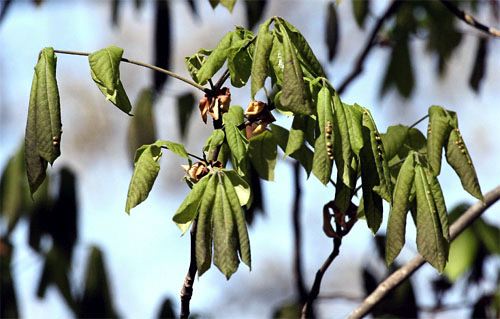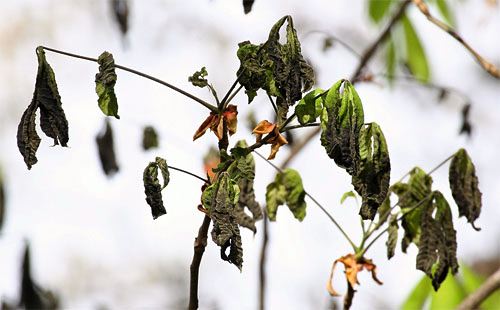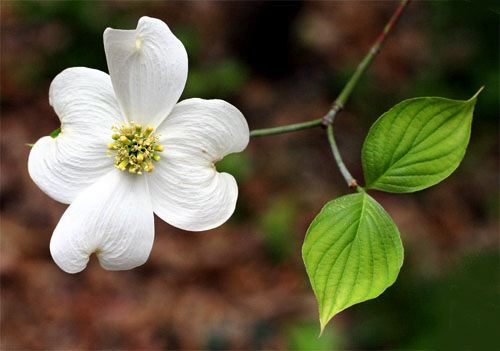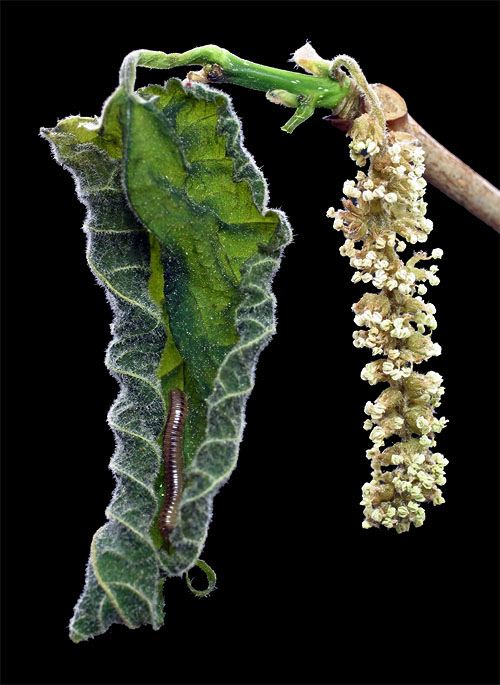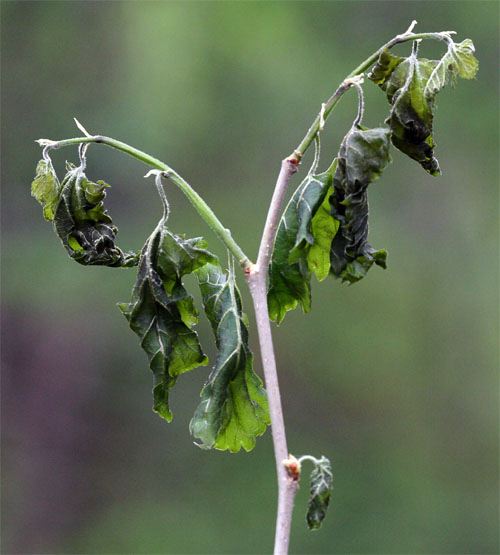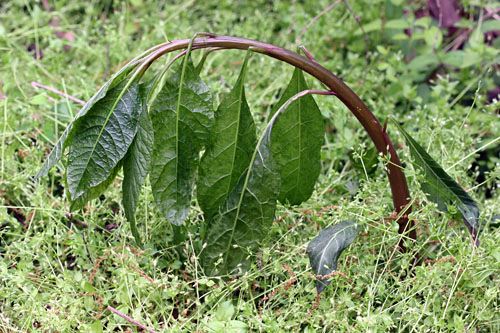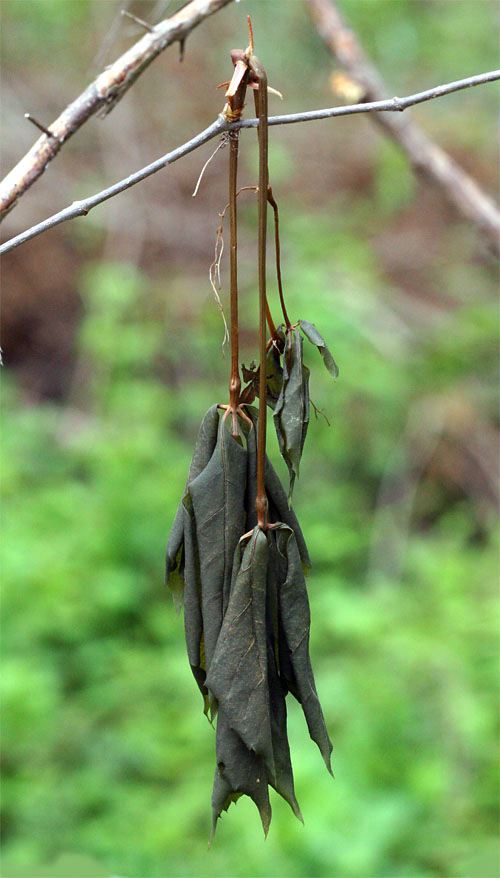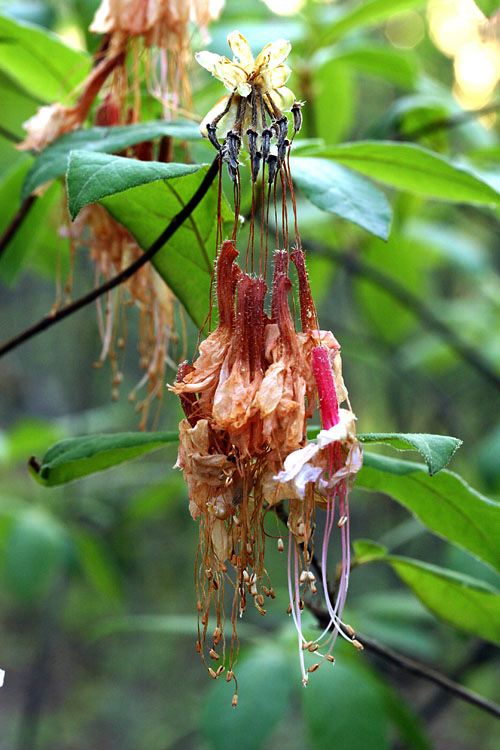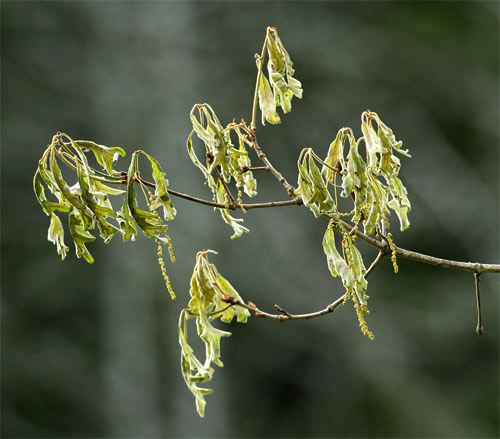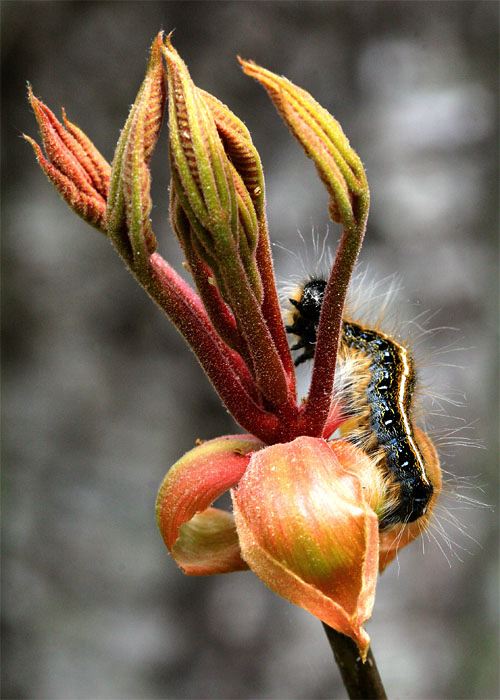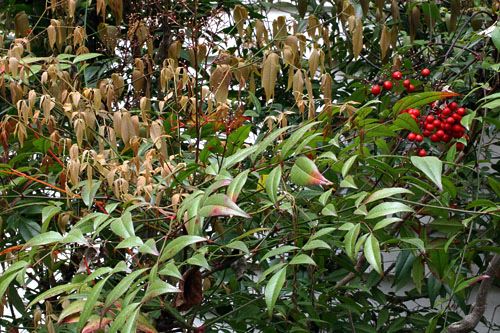|
|
|||
|
(Back to Preceding Week; on to Next Week) |
|
RECORD COLD AND
SPRING'S SWEET SMELL OF . . . DEATH At Hilton Pond Center we knew the first part of April 2007 would be cold when Carolina weathercasters warned viewers all week not to attend Easter sunrise services without parkas, long underwear, and wool gloves. Gas and oil suppliers took frantic calls from homeowners who had let fuel supplies dwindle, All week we watched as overnight temperatures got progressively lower--below freezing at dawn--and as daytime highs decreased from the low 60s on 5 April to barely the mid-40s on the 7th. This was a far cry from an unusually warm March 2007 when on many days we could comfortably bicycle back roads of York County in shorts and sleeveless jerseys. The most plaintive anti-cold weather cries came from gardeners and landscapers who knew their lovingly tended azaleas and dogwoods would be at peak bloom this week, and who lamented that freezing weather would likely kill bright blossoms that make the South a special place in spring. We, too, always enjoy this colorful showcase, so we sympathized with azalea lovers, advising them their shrubs had seen cold weather before and despite losing some flowers the azaleas likely would see no permanent damage. But that consolation came BEFORE the temperature on 7-8 April dropped overnight to a record-smashing 22 degrees here at York--apparently the lowest April temperature since the last Ice Age--and we awoke on Easter to spring's sweet smell of . . . death.
All text & photos © Hilton Pond Center On Easter morn we hopped quick as a bunny out of bed, checked the abysmally low 22 degree reading on the thermometer, and bundled up to go outside to bait traps--hopeful the frigid weather might bring birds in for banding. When we opened the back door of the old farmhouse, we were slapped in the face by two things: An expected blast of very cold air, and a strangely sweet smell unlike any we've ever encountered at Hilton Pond or elsewhere. We're used to the pleasant fragrances of early spring--Yellow Jessamine, in particular--but this new odor was almost overpowering and even a tad sickening. We asked other family members to stick their noses out the door for a whiff, and their interpretation was the air smelled a little like rotting persimmons--of which the Center has an abundance each fall, not spring. We glanced around the property and could find no new blossoms that could produce the heavy odor but noticed a big Shagbark Hickory just behind the farmhouse had some very droopy foliage (above). We examined several hickory leaves to find they were completely limp; as we held them up for closer inspection we detected an odor--the same one that filled the air around us. When we crushed one leaf and gave it a sniff we sensed that same sweet fragrance once again, but stronger. It was then we came to the startling and sad conclusion we were smelling the odor of death given off by tender new hickory leaves whose cells had frozen and burst due to the cold. Needless to say, this discovery didn't make us very happy, especially when we scanned our towering Shagbark Hickory and saw virtually every leaf was drooping and probably dead or dying. We we walked a short distance and found several other shrubs and trees with droopy leaves, but the shagbarks--from 36" saplings to 75-foot-tall giants--seemed to have been affected most drastically by the cold. After this alarming survey we departed for Easter-related gatherings and returned late in the evening with plans to examine the weather-ravaged hickories the following day. What we found on the morning of 9 April was far from pleasant.
Our photograph of the Shagbark Hickory at the top of this page shows how droopy the tree's leaves had become just after the record-breaking cold, and a second photo (just above) taken a day later verifies our dire first impressions. The hickory leaves that gave off pungent odor on Easter morning weren't just drooping anymore . . . now they were dead. Within 24 hours nearly every leaf on the shagbark had withered completely and turned brown--not a sight one wants in spring when bright green foliage should herald a tree's re-awakening after a long winter rest.
It was pretty obvious something about fresh foliage on Shagbark Hickory made it very susceptible to hard freezes, but we wondered what other flora also might have been affected as severely. During the day on 8 April--the day after the 22-degree low--we wandered our Hilton Pond property, inspecting trees and shrubs and herbaceous plants for freeze problems. Although there was no browning of the leaves or white bracts of Flowering Dogwoods (above) or damage to the foliage of early successional trees such as our plentiful Sweetgums and Winged Elms, a wide variety of less common plants were affected. In fact, we were both shocked and alarmed at how many of our trees and shrubs may have lost ALL new foliage to the record-breaking late freeze. Below we've assembled a checklist and a gallery of photos showing damage to just a few of the plants around Hilton Pond. The gallery may not be pretty, but it does document the extent to which low temperatures can affect Piedmont plants when their leaves are still tender.
This Mulberry leaf, fully wilted from the freeze, still held interest for an inch-long millipede that explored it for at least a half hour before curling up within. The pendant white flowers did not appear to be affected by the cold.
Rose-of-Sharon, although non-native, bears cup-shaped flowers that are a hummingbird favorite. At the end of the stem, each flower makes a semi-woody seed pod (above) that bursts open to release dozens of seeds. With wilted leaves, it's hard to predict how plentiful the plant's flowers will be this summer.
Just as nearly every Shagbark Hickory was decimated by the freeze, such was the case with our Hackberries (above). Virtually all of them--whether mature tall trees or year-old saplings--had wilted, darkened leaves not likely to survive.
A few herbaceous or semi-woody plants were affected by the freeze. The photo above shows a Pokeweed stem bent over from the cold, even though the tender leaves appear unaffected. This plant is an important producer of berries that nurture all sorts of birds, especially our resident Gray Catbirds and Northern Mockingbirds.
Willow Oaks (above), whose simple narrow leaves grow dense enough to cast considerable shade, received some freeze damage. It's possible only the leaf tips will be lost and the leaf bases will be able to continue at least some photosynthesis, but will it be enough for the oak to make acorns this fall?
Several woody vines showed effects of the freeze. Above, the foliage of Virginia Creeper was darkened by the cold and hangs lifeless from its stem. Ground-hugging indviduals of this species were mostly unaffected by the cold. Nearly every Poison Ivy plant we could find was similarly affected, with leaves on erect vines freezing and those on the ground remaining bright green.
Although we do have a few ornamental azaleas at Hilton Pond Center, this spring we've been glorying in the heaviest bloom ever on one of our native spcies--the Pinxter-flower (above). We're glad the foliage on this shrub were not affected but are disappointed the freeze wiped out the delicate pink flowers that broghtened our woods. All the photos above document without doubt that frigid temperatures on Easter morning brought immediate and extensive damage to foliage at Hilton Pond, but we fear the long-term outcome of this unprecedented late freeze will not be known for several weeks--or even next year or later. The balance of nature is far more complex than we humans will ever understand, so it's hard to predict all the effects of exceedingly cold temperatures at just the wrong time, i.e., shortly after leaf budburst. It's startlingly obvious our Shagbark Hickories and Hackberries have lost 99.9% of their leaves to the freeze, and it will be difficult for such trees to summon enough energy to replace foliage--especially since some of these plants still suffer from a five-year drought that finally ended a few years ago. With little or no foliage this spring, our trees and shrubs and vines will provide a dearth of food for herbivores such as caterpillars. To arborists this might sound like good news, but what will happen in a few weeks when spring warblers and thrushes arrive in migration and settle into our treetops, only to find no leaves and thus no caterpillars to provide energy exhausted birds need to continue their migratory flight? Even our local nesters may be hard-pressed during the upcoming breeding season to find enough succulent insects to feed their hungry chicks.
From a human perspective, we're going to miss all that shade from big canopy trees that grow on the west side of the old farmhouse, which means we may have to pull the shades and run the air conditioner more to counteract unblocked summer sun. Our "monster" White Oak--by far the largest tree at Hilton Pond--is too tall for us to actually touch its foliage, but a shot through our telephoto lens (above) makes it look an awful lot like the tree's leaves are wilted--even though the flower tassels appear to be okay. We are especially concerned about this particular tree because it is already under severe stress from a lightning strike last summer and may not be able to deal with the additional strain of having to make another full complement of new foliage. And on a personal note, we're a little distressed that leaves in our extensive Trumpet Creeper patch are all dead or dying; after all, flowers from this plant are a magnet for Ruby-throated Hummingbirds we've been studying for 24 years at Hilton Pond, and it's hard to see how the vines will rebound in time for the 2007 nesting season.
A 22-degree freeze that decimates plants can't be good news for either trees or homeowners--and imagine the economic impact of all the peaches and apples that got frostbitten. However, there is a silver lining. A few of our Shagbark Hickories hadn't produced leaves before the cold snap, somehow waiting until the day AFTER for their terminal buds to pop open and reveal fresh new leaves that might be nibbled by an Eastern Tent Caterpillar (above). It remains to be seen whether vines, shrubs, saplings, and mature trees at Hilton Pond will rebound after our once-in-a-lifetime April freeze. Nature is resilient, and even though our local trees haven't had to deal with such sub-freezing temperatures in human memory, their species undoubtedly have encountered such dreadful conditions in the past. We can only hope that within the trees' genetic make-up is a message that says: "Okay, you lost all your leaves to a very late freeze; time to produce a least a few new ones and make the best of the spring and summer season." Plants without this kind of flexibility will perish, while those with it will leaf out once again--even if they don't produce fruit in 2007. In any case, we just hope we never again have to experience a cold, hard freeze in April--followed by spring's sweet smell of dead and dying leaves. All text & photos © Hilton Pond Center POSTSCRIPT: At Hilton Pond Center, the following native and exotic plants (listed in no particular order) showed some degree of damage from the 22-degree freeze on the night of 7-8 April. For some taller trees we could examine leaf damage only through binoculars and cannot be sure of the true extent of loss. For some plants damage was immediate, for others it may take several more days or weeks to determine how much their foliage was affected. Please note the list is only a sampling and does not include every plant species found at Hilton Pond.
All text & photos © Hilton Pond Center In Hilton Pond's ornamental Nandina (above), older "evergreen" leaves survived freezing temperatures but this spring's new foliage wilted and turned brown Shagbark Hickory (near total leaf loss) Trees and shrubs with already-established spring foliage showed little or no damage, nor was there a problem with new leaves on the following: Sweetgum (no apparent damage)
Comments or questions about this week's installment?
Thanks to the following fine folks for recent gifts in support of Hilton Pond Center for Piedmont Natural History and/or Operation RubyThroat: The Hummingbird Project. Your tax-deductible contributions allow us to continue writing, photographing, and sharing "This Week at Hilton Pond."
IMPORTANT NOTE: If you ever shop on-line, you may be interested in becoming a member of iGive, through which nearly 700 on-line stores from Barnes and Noble to Lands' End will donate a percentage of your purchase price in support of Hilton Pond Center and Operation RubyThroat. We've just learned that for every new member who signs up and makes an on-line purchase within 45 days iGive will donate an ADDITIONAL $5 to the Center. Please sign up by going to the iGive Web site. It's a painless and important way for YOU to support our work in conservation, education, and research. "This Week at Hilton Pond" is written & photographed You may wish to consult our Index of all nature topics covered since February 2000. You can also use our on-line Hilton Pond Search Engine at the bottom of this page. For a free, non-fattening, on-line subscription to |

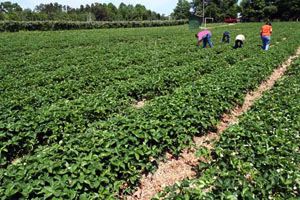 suspecting they'd have no more use for furnace heat now that spring had arrived, and local farmers anticipated sleepless nights protecting strawberry plants (right) with misting machines that apply a relatively "warm" 32-degree layer of ice as protection against even colder air temperatures.
suspecting they'd have no more use for furnace heat now that spring had arrived, and local farmers anticipated sleepless nights protecting strawberry plants (right) with misting machines that apply a relatively "warm" 32-degree layer of ice as protection against even colder air temperatures.